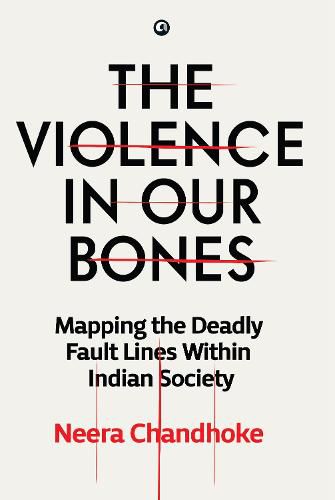Readings Newsletter
Become a Readings Member to make your shopping experience even easier.
Sign in or sign up for free!
You’re not far away from qualifying for FREE standard shipping within Australia
You’ve qualified for FREE standard shipping within Australia
The cart is loading…






This title is printed to order. This book may have been self-published. If so, we cannot guarantee the quality of the content. In the main most books will have gone through the editing process however some may not. We therefore suggest that you be aware of this before ordering this book. If in doubt check either the author or publisher’s details as we are unable to accept any returns unless they are faulty. Please contact us if you have any questions.
The Buddha, Ashoka, Gandhi-the three greatest Indians who ever lived-were emblematic of non-violence. Yet, paradoxically, their country of origin is one of the most violent places on earth. Do ‘we, the people of India’ have violence in our bones? This work explores different aspects of our society to answer the question.
Despite a blood-soaked Partition coupled with many other challenges that all emerging democracies have had to negotiate, India’s record in upholding the democratic values enshrined in its Constitution has been impressive. Yet, violence remains an inextricable part of everyday life. Parts of the country are rocked by ‘low-intensity’ operations against various insurgencies. Our society is also scarred by caste violence, communal riots, and viciousness against women, children, the transgender community, and minorities. The country’s large size, a highly differentiated population, uneven economic development, linguistic differences, regional imbalances, class and caste hierarchies, the politicizing of religious identities, appropriation of tribal lands, agrarian distress, joblessness, poverty, and deep inequality all breed frustration. Violence underlies almost every social and political interaction within Indian society, from the violence of everyday life to the brutal actions of the state or those ranged against the state. The Violence in Our Bones maps the assorted kinds of violence in India, and explores why, even as a successful democracy, violence continues to be endemic in the nation.
$9.00 standard shipping within Australia
FREE standard shipping within Australia for orders over $100.00
Express & International shipping calculated at checkout
This title is printed to order. This book may have been self-published. If so, we cannot guarantee the quality of the content. In the main most books will have gone through the editing process however some may not. We therefore suggest that you be aware of this before ordering this book. If in doubt check either the author or publisher’s details as we are unable to accept any returns unless they are faulty. Please contact us if you have any questions.
The Buddha, Ashoka, Gandhi-the three greatest Indians who ever lived-were emblematic of non-violence. Yet, paradoxically, their country of origin is one of the most violent places on earth. Do ‘we, the people of India’ have violence in our bones? This work explores different aspects of our society to answer the question.
Despite a blood-soaked Partition coupled with many other challenges that all emerging democracies have had to negotiate, India’s record in upholding the democratic values enshrined in its Constitution has been impressive. Yet, violence remains an inextricable part of everyday life. Parts of the country are rocked by ‘low-intensity’ operations against various insurgencies. Our society is also scarred by caste violence, communal riots, and viciousness against women, children, the transgender community, and minorities. The country’s large size, a highly differentiated population, uneven economic development, linguistic differences, regional imbalances, class and caste hierarchies, the politicizing of religious identities, appropriation of tribal lands, agrarian distress, joblessness, poverty, and deep inequality all breed frustration. Violence underlies almost every social and political interaction within Indian society, from the violence of everyday life to the brutal actions of the state or those ranged against the state. The Violence in Our Bones maps the assorted kinds of violence in India, and explores why, even as a successful democracy, violence continues to be endemic in the nation.